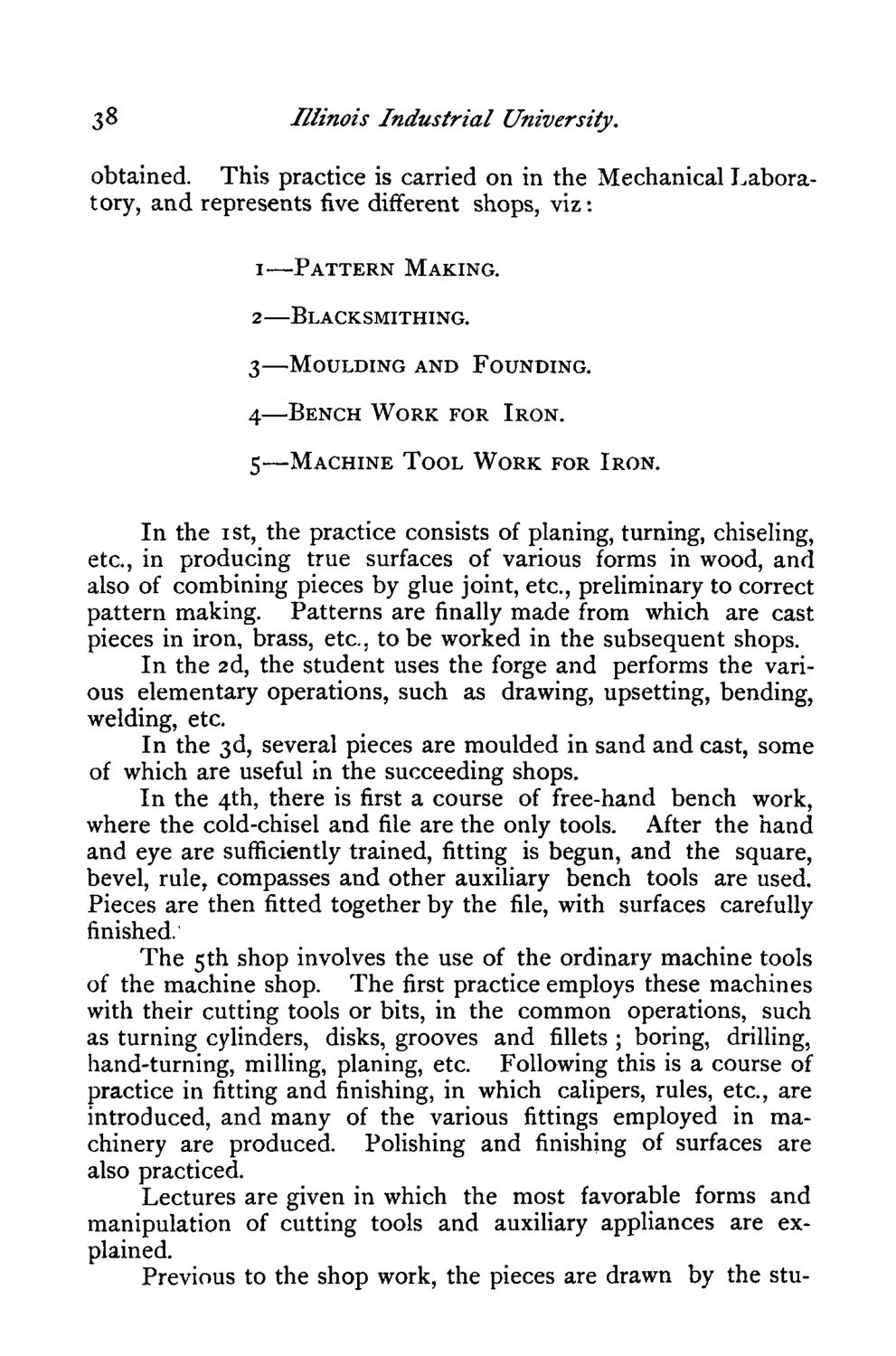| |
| |
Caption: Course Catalog - 1879-1880
This is a reduced-resolution page image for fast online browsing.

EXTRACTED TEXT FROM PAGE:
38 Illinois Industrial University. obtained. This practice is carried on in the Mechanical Laboratory, and represents five different shops, viz: 1—PATTERN MAKING. 2—BLACKSMITHING. 3—MOULDING AND FOUNDING. 4—BENCH WORK FOR IRON. 5—MACHINE TOOL WORK FOR IRON. In the 1st, the practice consists of planing, turning, chiseling, etc., in producing true surfaces of various forms in wood, and also of combining pieces by glue joint, etc., preliminary to correct pattern making. Patterns are finally made from which are cast pieces in iron, brass, etc.. to be worked in the subsequent shops. In the 2d, the student uses the forge and performs the various elementary operations, such as drawing, upsetting, bending, welding, etc. In the 3d, several pieces are moulded in sand and cast, some of which are useful in the succeeding shops. In the 4th, there is first a course of free-hand bench work, where the cold-chisel and file are the only tools. After the hand and eye are sufficiently trained, fitting is begun, and the square, bevel, rule, compasses and other auxiliary bench tools are used. Pieces are then fitted together by the file, with surfaces carefully finished. The 5th shop involves the use of the ordinary machine tools of the machine shop. The first practice employs these machines with their cutting tools or bits, in the common operations, such as turning cylinders, disks, grooves and fillets; boring, drilling, hand-turning, milling, planing, etc. Following this is a course of practice in fitting and finishing, in which calipers, rules, etc., are introduced, and many of the various fittings employed in machinery are produced. Polishing and finishing of surfaces are also practiced. Lectures are given in which the most favorable forms and manipulation of cutting tools and auxiliary appliances are explained. Previous to the shop work, the pieces are drawn by the stu-
| |